
Guests
- Ed Mierzwinskiconsumer program director of the U.S. Public Interest Research Group.
Ed Mierzwinski of the Public Interest Research Group (PIRG) reports on a study concerning ATM surcharges and banking monopoly. The explanation given in an example of “double dipping” is that when you ask for $20 at a machine, the machine takes $22 from your account and gives you $20. In addition to the $2 fee, the bank or creditor of the ATM also gets a portion of the dollar you pay your bank for this transaction. Plus and Cirrus are allowing this ATM surcharge fee as of April 1, 1996, due to pressure from banks and their creditors, Visa and Mastercard. Because small banks and credit unions have less access to ATM sites, they are at risk for losing business to large banks where consumers may not have to pay an extra fee for access to their funds. A monopoly of the ATM business presents itself as a result of the lack of choice in banks to use when considering availability of ATMs and the surcharge penalty when using out-of-network ATMs. Lack of regulation at the state level is preventing a check against the domination of the banking market.
Transcript
AMY GOODMAN: You’re listening to Democracy Now! I’m Amy Goodman. And I want to thank Juan González for joining us, a columnist from the New York Daily News. We’re now going to move on to another issue.
The ATM and bank card have become an indispensable part of daily life for many of us. But you may have noticed something new at an ATM recently: a whopping surcharge of as much as $2.50 for taking out money out of an ATM that’s not part of your bank. A new study out this past week from the U.S. Public Interest Research Group, or U.S. PIRG, examines these new charges.
Joining us to discuss the new study is Ed Mierzwinski, the consumer program director of the U.S. PIRG, a national association of 20 state PIRGs based in Washington, D.C.
Ed Mierzwinski, can you tell us what your survey found?
ED MIERZWINSKI: The PIRG study found that the number of ATM machines that were double charging or double dipping, surcharging their customers two fees to use the ATM only once, has increased from only 23% six months ago to 45%, just a year —
AMY GOODMAN: What do you mean, “double dipping”?
ED MIERZWINSKI: Well, historically, ATMs have been charging you a fee — your bank has charged you a fee when you use another bank’s ATM, over 80% of the time. That fee that you pay to your bank is shared between your bank and the other bank and the ATM network. About a year ago, Plus and Cirrus, the two largest ATM networks, got rid of their policy that prohibited banks from charging an additional surcharge. So what’s happened since then is that 45% of ATM machines now take a fee off the top when you use their ATM if you’re not their account holder. And then, of course, you pay your own bank a fee, 80% of the time, and that bank gets part of that fee, as well. So we call it double dipping or charging you twice. The way it works is very simple. You ask for $20. The machine takes $22 out of your account, gives you $20, keeps two bucks and then gets a portion of the average dollar that you pay your own bank. I know that sounds like a whole lot of numbers, but, basically, the bank —
AMY GOODMAN: Wow.
ED MIERZWINSKI: — gets a lot of fees for a very small transaction from you. And most of it’s profit, Amy.
AMY GOODMAN: How are they getting away with this, Ed?
ED MIERZWINSKI: Well, there’s no law against surcharging. In fact, the Plus and Cirrus networks thought it was a bad idea and opposed it for years. Finally, they gave up, because a number of their banks were persistently enacting laws in several states to force the issue and allow it to be allowed, some of the states in the Midwest. And so, Plus and Cirrus said, as of April 1st, 1996, let’s just allow surcharging anywhere in the country. These are massive ATM networks with thousands and thousands of machines each. And the networks, of course, are simply associations of banks. They are affiliated with Visa and Mastercard, which again are associations of banks. And two states, Connecticut and Iowa, by regulation, have banned the double fee. About a dozen states are considering legislation to ban the double fee or the surcharge. And in Congress, an odd couple of Bernie Sanders, independent of Vermont, and Al D’Amato, Republican of New York, have legislation to ban the surcharge.
AMY GOODMAN: Now, you say that two states, in your report — two states, Connecticut and Iowa, have banned the ATM surcharges by order of the banking commissioner there.
ED MIERZWINSKI: Absolutely. They believe that state law prohibits a fee charged in this manner. And Fleet Bank is suing the state of Connecticut. However, Connecticut and Iowa, and we hope other states, will continue to enact bans on this fee, either legislatively or by a commissioner order.
AMY GOODMAN: On what grounds are they banning the surcharge at the ATM?
ED MIERZWINSKI: They’re simply saying that it is unfair and deceptive and that it is in fact prohibited by state law for an issuing ATM to charge an additional fee, since the ATM that you’re using is compensated already by your own bank. Using another bank’s ATM is the same as making a long-distance telephone call. You pay a fee to your own telephone company for making a long-distance call, and it’s shared between your telephone company, the other telephone company and the long-distance company. It’s the same thing with ATM fees. But all of a sudden, because of the nature of this transaction, the other ATM seems to think it can get away with charging you twice. And the states feel they’ve got very strong legal precedent to block it.
One of the — the major reason we are concerned, in addition to the fact that this outrageous fee doubles the cost of an ATM transaction, is that we think it will lead to further — well, to further consolidation of the banking industry. Not only are banks consolidating with investment houses, as has been in the papers this week, but banks are consolidating with each other. And the big banks are getting bigger. As the big banks get bigger, there is less competition. And oddly enough, despite economics 101, the big banks, which should have lower costs, actually have higher fees. And we are concerned, as are small banks and credit unions, that big banks benefit more from this surcharge. That is, if you’ve got a lot of ATM machines and you’re not surcharging your own customers but you are surcharging others, the customer of a small credit union might get tired of paying the surcharge, and all of a sudden say, “Oh, the heck with it. I’m going to cancel my account at this small credit union and switch it over to a big bank.” And the more consumers who do that, the more powerful the big banks become, and the greater monopoly power they’ve got. NationsBank, Wells Fargo, Bank of America are some of the big powerful banks that dominate not only the banking landscape, but also the ATM landscape. And their goal, really, is to get even bigger. And that concerns me a great deal. It’s one thing to rip off consumers. I don’t like that; I’m a consumer advocate. But it’s another thing to screw up the marketplace. And I think these surcharges are really screwing up the marketplace.
AMY GOODMAN: I mean, there’s no question that this pushes you toward banking at a larger bank where you don’t have to pay that double charge.
ED MIERZWINSKI: That’s exactly right. And again, the problem with that, I mean, on the one hand, you would say, “Well, let the marketplace operate,” but, on the other hand, the marketplace doesn’t operate when you’ve got fewer choices. And if you’ve got NationsBank everywhere, like McDonald’s everywhere, you’re not going to get quality local banking. If the credit unions are pushed out of business, then the banks are not going to have them as a competitive yardstick.
The interesting thing about the credit unions, which you are probably aware of, is that in addition to trying to squeeze the credit unions out by imposing surcharges — since the credit unions have very few ATM machines, their customers are most at risk to switch their accounts to avoid paying the surcharges — the American Bankers Association has also been leading a nationwide push, and has had some recent success in the courts, in simply trying to sue the credit unions to put them out of business. I mean, these are small, member-owned institutions that hold less than 2% of the deposit assets of the nation’s economy, and yet the banks, rather than letting the marketplace operate, are going to court to try to eliminate the right of credit unions to exist.
So, they really — they don’t have the consumers’ best interest at heart, in my view. And that’s why we’re trying to protect the economy and protect choice in the financial marketplace by banning ATM surcharges, which are just one more step toward eliminating smaller, locally controlled and, in many cases in the credit unions, consumer-owned institutions.
AMY GOODMAN: We’re talking to Ed Mieirzwinski, and he is consumer program director at U.S. PIRG, the national lobbying office for the state Public Interest Research Groups. You’re talking about the smaller, consumer-owned credit unions. I also think about the jobs that have been lost by the ATMs. The automatic tellers now mean — is it true that there are fewer human tellers?
ED MIERZWINSKI: Actually, the banks claim, and their numbers on this are probably accurate, that they have maintained their branch base despite the increase in the number of ATM machines. Down the line, however, they will be able to make those branches much more automated. But in the short run, the — apparently, banking, although there has been some consolidation, has retained a great number of branches. As they continue to automate, however, we feel that there, of course, will be fewer and fewer branches, which means correspondingly fewer tellers. Of course, now, too, the banks are also charging you a fee to go to the teller, in some circumstances. So they want you to pay a fee to go to the ATM machine. They want you to pay a fee to go to the teller. They want you to pay a fee if you pay your credit card late. And now, as you know, many banks want you to pay a fee if you pay your credit card on time. So, you can’t win.
AMY GOODMAN: I want to read a statement from the ABA, from the American Banking Association, on ATM pricing that they sent over to us. They say, “Today consumers have more choices than ever to get cash when and where they want it. Surcharging has helped this along. Recent surveys show the number of ATMs grew by 40% in '96, a record total of 33,000 new terminals. Before surcharging, ATM growth had stagnated. These new ATMs were placed in convenient locations, such as hospitals, convenience stores, theaters and sporting arenas. ATMs have expanded consumers' options in a way that would have been unthinkable 25 years ago. Access to your bank account 24 hours a day, seven days a week. Debit cards, credit cards, tellers and checks are still readily available, with electronic cash and smart cards on the horizon.” And it says that competition is already keeping ATM pricing in check. Most banks offer unlimited free ATM usage for their own customers. Alliance of financial institutions from California to Massachusetts already have banded together and chosen not to surcharge as a competitive position. And they finally state, “The marketplace should decide prices for ATMs, not the government. Price controls will only inhibit innovation and put a halt to future ATM growth.” Your response, Ed Mierzwinski?
ED MIERZWINSKI: Well, first of all, the banks claim they need the surcharges at these so-called remote ATMs. Our survey found that banks surcharge in just about the same level — about 50% of ATMs surcharge either at these remote locations, in grocery stores or in malls or wherever they are, and at the same time they surcharge at bank branches. My response to the banks is, if you are going to use that as your justification — “We’ll only surcharge at those other machines that are not located attached to your branch” — but why does NationsBank need to surcharge at every one of its branches? Wells Fargo, by the way, one of the biggest banks in the West, we surveyed 28 Wells Fargo machines in six states. Every single one of them surcharged, whether it was at a branch, not at a branch, except for the one in the basement of the state Capitol in Sacramento, which is considering ATM surcharge legislation. So —
AMY GOODMAN: So, you mean the — so the legislators don’t have to pay it.
ED MIERZWINSKI: The legislators don’t have to pay a fee. I mean, they may have problems with the House bank in Washington, D.C., but — or they did have problems with the House bank in Washington, D.C., but out in Sacramento, ATMs are no-surcharge ATMs. I think the banks are right. There has been a response. Some small banks and some small credit unions are trying to make the marketplace work. They are fighting back with no-surcharge policies. Unfortunately, it may be too little, too late. They own a very small network of machines relative to the number of machines that in fact are surcharging. And for the first time in my career as a consumer advocate — and I’ve been working either in Connecticut or Washington, D.C., for nearly 20 years — last summer, I testified before Congress. And some banks and credit unions actually testified along with me in favor of banning the surcharge. Of course, these were the very small banks and credit unions.
And again, the marketplace and the surcharge, we don’t think necessarily will work together. And the surcharge is not only unfair to consumers, which can’t be solved by a disclosure, because a consumer is a smart individual — you or me, anyone else. We know that we pay a fee unless we go to our own bank. The only reason we’re at this other bank is because we can’t find our own bank. And that’s where they know they’ve got us, and that they’re going to ask us, “Do you want to pay an extra $1.50?” And most consumers are going to just push the button and say yes, because they’ve got us. So, disclosure won’t work.
So, then it gets to the second argument, that they really don’t like to talk about. And that is whether or not the big banks are getting bigger, and whether the surcharge is a way to squeeze out small banks. And, in fact, it is. And that’s what concerns us the most.
AMY GOODMAN: So, what are you suggesting people do?
ED MIERZWINSKI: Well, as for individual consumers, the first step is to have an account at a credit union or a small, locally owned community bank, wherever possible. Unfortunately, if you use ATM machines and if you take advantage of your ATM card a lot, well, you’ve got to make some trade-offs, because these surcharges hammer you. The surcharge has more than doubled the cost of ATM transactions. So, if you travel a lot or don’t know where your own bank or credit union’s ATMs are, you’ve got to be very careful to avoid the surcharge. But try to use your own machine. And if not, try to use a machine that does not surcharge. Of course, be aware that you’ll pay a network fee for using another bank’s ATM when you use one not owned by your own bank or credit union. That’s the first step.
The second step is, obviously, complain to Congress and complain to your state legislators about ATM surcharges and all other unfair banking fees and practices. There are legislative proposals in at least a dozen states. Since our report came out, we’ve been contacted by legislatures around the country. And there may be proposed bills in other states, as well. So, urge support of legislation such as the Sanders bill in the House of Representatives or the D’Amato bill in the U.S. Senate to ban ATM surcharges. Consumers need to vote with their feet when they come to an ATM that surcharges, and find one that does not. And they need to vote by sending letters to the editor and letters to Congress about these unconscionable fees.
AMY GOODMAN: If people want to get a hold of your report, how can they do it?
ED MIERZWINSKI: Our report is on the internet, www.pirg.org.
AMY GOODMAN: The phone number of your office?
ED MIERZWINSKI: 202-546-9707. And our email address is pirg@pirg.org.
AMY GOODMAN: Well, I want to thank you very much, Ed Mierzwinski. Again, that phone number, 202-546-9707, especially if you’d like to get a copy of that report. And also, the email address, pirg@pirg.org.
You’ve been listening to Democracy Now!, which is produced by Dan Coughlin. Julie Drizin is our executive producer. Thanks to Dred Scott Keyes, our engineer today. Also thanks to Jose Santiago. If you’d like to get a copy of today’s show, you can order a cassette by calling 1-800-735-0230. That’s 1-800-735-0230. And if you’d like to make a comment on today’s show, you can call our comment line. We’re playing some of those comments during our shows. You can call us at 202-588-0999 extension 313. That’s 202-588-0999 extension 313. Monday on Democracy Now!, we speak with Elaine Bernard of the Harvard Trade Union Program. On next weekend, we’ll be going out to the Detroit Labor Notes conference. I’m Amy Goodman. Thanks for listening to another edition of Pacifica Radio’s Democracy Now!

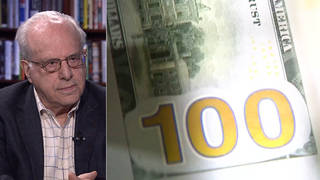

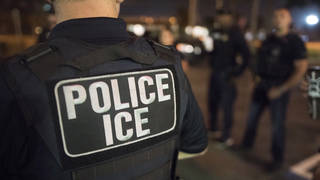
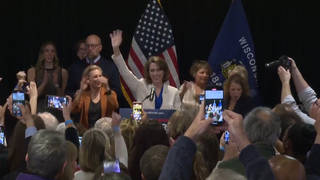





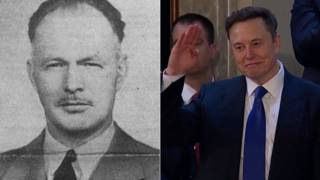
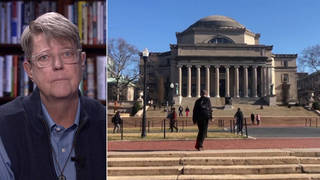
Media Options